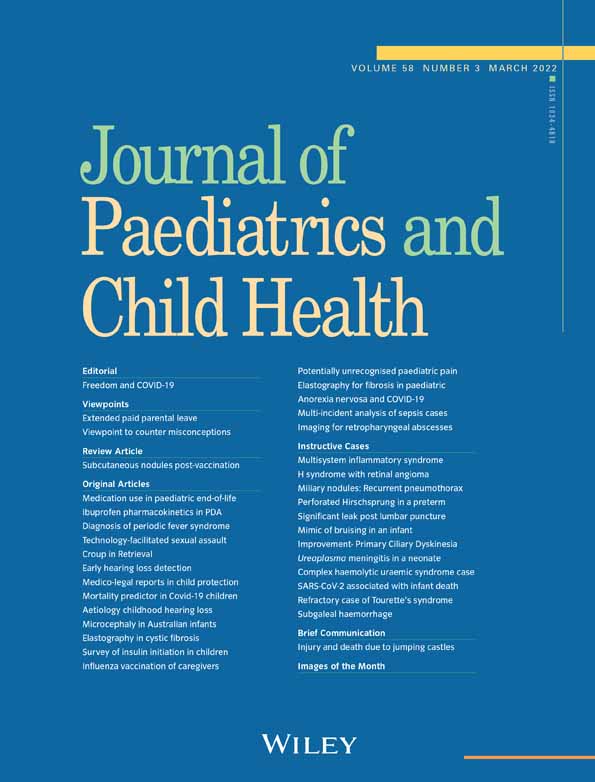Practices and perspectives regarding medico-legal reports in day-to-day cases in tertiary Australian child protection units
Conflict of interest: None declared.
Abstract
Aim
This study aimed to (i) summarise the workforce and (ii) identify how medico-legal opinion is communicated to the child protection and criminal courts within the day-to-day work of child protection paediatricians in tertiary child protection services.
Methods
A survey of medical directors and child protection paediatricians working within tertiary child protection units within Australasia was conducted.
Results
Directors from 5 out of 11 centres, and 18 paediatricians who work in these units responded. Most were female (89%) and experience varied, including many (62%) who had studied forensic medicine (Monash University). Just over half (56%) usually/always provided an interim report to the child protection system before a child is discharged and 59% had those reports peer-reviewed. Two-thirds (61%) had varied reports for the child protection agency initially with reports finalised later for the criminal jurisdiction.
Conclusion
Considerable variation in how opinion is communicated to the child protection system and later to police was identified. There were significant differences in staffing ratios between tertiary units which likely influences how this work is done in day-to-day cases evaluated by child protection paediatricians within their hospital due to volume of cases and demand. Peer review of opinion communicated to the child protection agency is not always undertaken and reports for the criminal jurisdiction do not always include review of evidence which may be identified after a child has been discharged from hospital. This survey captures how forensic practices and principles are embedded into child protection and exposes some challenges in being responsive to both the child protection and criminal justice systems.




